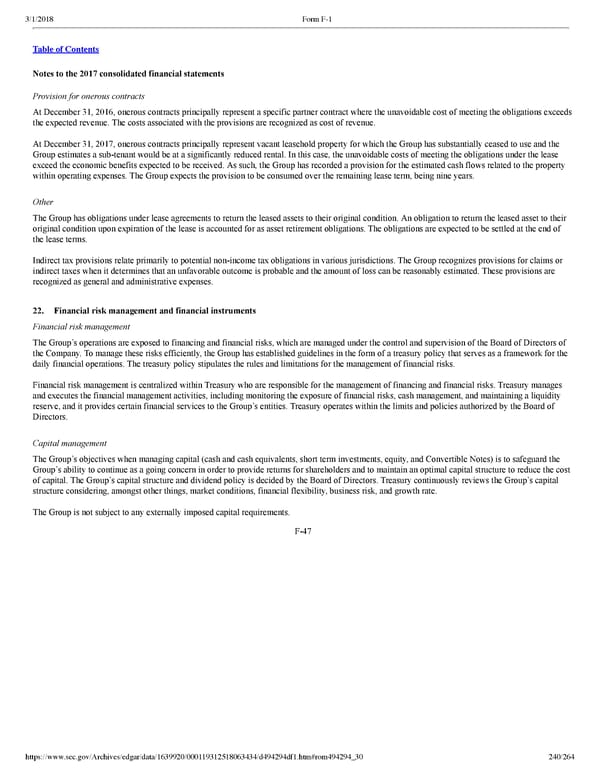240/264 Notes to the 2017 consolidated financial statements Provision for onerous contracts At December 31, 2016, onerous contracts principally represent a specific partner contract where the unavoidable cost of meeting the obligations exceeds the expected revenue. The costs associated with the provisions are recognized as cost of revenue. At December 31, 2017, onerous contracts principally represent vacant leasehold property for which the Group has substantially ceased to use and the Group estimates a subtenant would be at a significantly reduced rental. In this case, the unavoidable costs of meeting the obligations under the lease exceed the economic benefits expected to be received. As such, the Group has recorded a provision for the estimated cash flows related to the property within operating expenses. The Group expects the provision to be consumed over the remaining lease term, being nine years. Other The Group has obligations under lease agreements to return the leased assets to their original condition. An obligation to return the leased asset to their original condition upon expiration of the lease is accounted for as asset retirement obligations. The obligations are expected to be settled at the end of the lease terms. Indirect tax provisions relate primarily to potential nonincome tax obligations in various jurisdictions. The Group recognizes provisions for claims or indirect taxes when it determines that an unfavorable outcome is probable and the amount of loss can be reasonably estimated. These provisions are recognized as general and administrative expenses. 22. Financial risk management and financial instruments Financial risk management The Group’s operations are exposed to financing and financial risks, which are managed under the control and supervision of the Board of Directors of the Company. To manage these risks efficiently, the Group has established guidelines in the form of a treasury policy that serves as a framework for the daily financial operations. The treasury policy stipulates the rules and limitations for the management of financial risks. Financial risk management is centralized within Treasury who are responsible for the management of financing and financial risks. Treasury manages and executes the financial management activities, including monitoring the exposure of financial risks, cash management, and maintaining a liquidity reserve, and it provides certain financial services to the Group’s entities. Treasury operates within the limits and policies authorized by the Board of Directors. Capital management The Group’s objectives when managing capital (cash and cash equivalents, short term investments, equity, and Convertible Notes) is to safeguard the Group’s ability to continue as a going concern in order to provide returns for shareholders and to maintain an optimal capital structure to reduce the cost of capital. The Group’s capital structure and dividend policy is decided by the Board of Directors. Treasury continuously reviews the Group’s capital structure considering, amongst other things, market conditions, financial flexibility, business risk, and growth rate. The Group is not subject to any externally imposed capital requirements. F47
 Spotify F1 | Interactive Prospectus Page 239 Page 241
Spotify F1 | Interactive Prospectus Page 239 Page 241